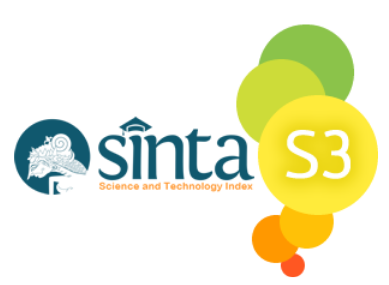THE INFLUENCE OF MOTIVATION AND WORK FACILITIES ON EMPLOYEE PERFORMANCE: STUDY ON ACADEMIC STAFF OF THE FACULTY OF ADMINISTRATIVE SCIENCE, UNIVERSITAS BRAWIJAYA
Abstract
This study aims to find out how significant and influential it is on employee performance from two variables, namely the motivation variable (x1) and the work facility variable (x2). The dominant-less dominant mix method is being used in this study at Brawijaya University's academic division of the Faculty of Administrative Sciences. An explanatory research approach is being used, using the entire population as a sample of 35 employees using linear regression data analysis techniques duplicates and interviews. From the results of the analysis, it can be concluded that motivation and work facilities simultaneously have a significant influence on employee performance. This is evident from the F test where the data can be seen that the F value is 7.968 > 3.28 (F table) and with a significant F of 0.002 where the significance is smaller or less than 0.05, thus it is found that motivation (x1) and facilities (x2) have an influence on performance (y). Of course, this was also justified by the related party in the interview who said that motivation and work facilities are very important, especially in supporting activities in the academic section. Without motivation at work, of course, employees will be reluctant to do work because of the rolling of the assignment letter given, whereas without facilities that support data input activities, etc. in academic activities, it will be very difficult to work on and will take a long time.
Keywords
Full Text:
PDFReferences
BPS. (2020). Jumlah Mahasiswa S1 Universitas Brawijaya (UB) Menurut Fakultas dan Jenis Kelamin (Orang), 2020-2021, https://malangkota.bps.go.id/indicator/28/448/1/jumlah-mahasiswa-s1-universitas-brawijaya-ub-menurut-fakultas-dan-jenis-kelamin.html.
Budiyanto, & Oetomo, H. W. (2011). The effect of job motivation, work environment and leadership on organizational citizenship behavior, job satisfaction and public service quality in Magetan, East Java, Indonesia. World Academy of Science, Engineering and Technology, 75(3), 192–200.
Faisal. (2005). Pengaruh Insentif dan Fasilitas Kerja terhadap Produktivitas Karyawan. Yogyakarta: FE UGM.
Gomes, F. C. (2003). Manajemen Sumber Daya Manusia (2nd ed.). Andi Offset.
Hasibuan, M. (2013). Manajemen Sumber Daya Manusia (Edisi Revisi). Bumi Aksara.
Hasibuan, M. (2014). Manajemen Sumber Daya Manusia. Bandung: CV Pustaka Setia.
Mathis, R. L. M. dan J. (2010). Human Resource Management (13th ed.). SouthWestern Cengage Learning.
Moeherino. (2012). Pengukuran Kinerja Berbasis Kompetensi. Jakarta: Raja Grafindo Persada
Mulyapradana, A., & Hatta, M. (2016). Jadi Karyawan Kaya Genius Mengetahui & Mengelola Hak Keuangan Karyawan. Jakarta: Visimedia
Nawawi, H. (2016). Manajemen Sumber Daya Manusia (untuk Bisnis yang Kompetitif) (Cet.9). Gadjah Mada University Press.
Pinder, C. C. (2008). Work Motivation in Organizational Behavior (2nd ed.). Psychology Press.
Rika, Okana. (2017). Pengaruh Disiplin, Fasilitas Kerja Dan Pelatihan Karyawan Terhadap Produktivitas Kerja Karyawan (Studi Kasus Pada Bri Syariah Solo). Jurnal Jurusan Perbankan Syariah Fakultas Ekonomi dan Bisnis Islam Institut Agama Islam Negeri (IAIN) Salatiga.
Sedarmayanti, H. J. (2018). Tata Kerja dan Produktivitas Kerja. Bandung. Mandar Maju.
Sinambela, L.P. (2017). Manajemen Sumber Daya Manusia. Jakarta: Bumi Aksara.
Sugiyono. (2015). Metode Penelitian Administrasi (13th ed.). Bandung: Alfabeta.
Tremblay, M. A., Blanchard, C. M., Taylor, S., Pelletier, L. G., & Villeneuve, M. (2009). Work Extrinsic and Intrinsic Motivation scale: its value for organizational psychology research. Canadian Journal of Behavioural Science, 41(4), 213–226. https://doi.org/10.1037/a0015167.
DOI: https://doi.org/10.5281/zenodo.8105186
Refbacks
- There are currently no refbacks.
Copyright (c) 2023 Erudio Journal of Educational Innovation

This work is licensed under a Creative Commons Attribution 4.0 International License.












